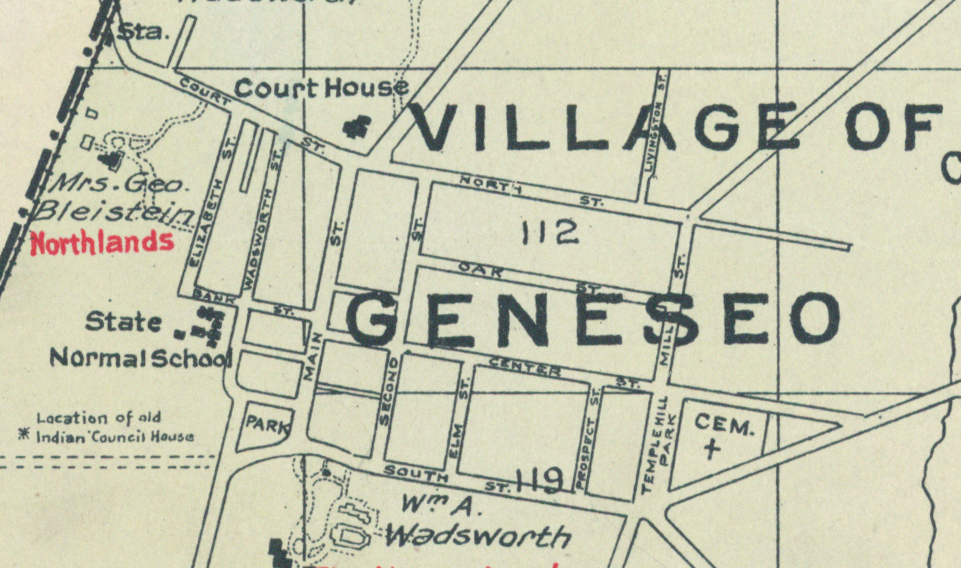We continue our student Q&A series Isabel Owen (’19), who’s majoring in history and creative writing. We talk about the importance of approaching history from the bottom up, and the links between history and social change.
Is there a particular kind of history (field, approach, time period, theme) that you’re most interested in?
Before I came to Geneseo, I had no idea that cultural history was a topic of study. I found myself quickly attracted to this method of history because it makes sense to me as a writer to filter people’s thoughts and lives through the zeitgeist’s popular culture—visual, written, musical, physical, and beyond. It is, essentially, history from the “bottom up” which is something I find intellectually liberating. It also challenges power. Cultural history makes me ask questions about preconceived notions of history—questions I wrestle with in my Modern Mexico class with Dr. Jones, where learning about the spread of nationalisms through modes like train poetry and body culture in Porfirian Mexico made me wonder if perhaps there was a much bigger revolution before the “Mexican Revolution.” Challenging this in class, I learned that, of course, this constitutes an active discussion among cultural historians of Mexico. It’s fascinating to think about how we can change our perceptions of history based on whose voices we listen to.

What did you research for your HIST 302 course, and what did you want that research to achieve?
My research was on changing conceptions of Jewish womanhood on the Lower East Side at the turn of the twentieth century. This project started off more as an identity search than anything, so it took me a while to answer that “So what?” question, which was one of the hardest roadblocks I’ve faced academically. At first, I wanted my research to try to bridge the gap between popular conceptions in the American-Jewish imaginary as the Lower East Side as the place where the modern, new Jewish woman was born. In the end, my research did that and also worked as a piece of cultural history, relying on a multiplicity of Jewish woman’s voices to speak about the close relation of mothers and daughters in the evolution of the Jewish-American female identity.
What’s the one thing you came across in the course of your independent research that you think more people should know about?
One thing that I wasn’t aware of before starting my project was the trend of desertion among Lower East Side Jewish families of this time. Reading letter after letter in the Bintel Brief (a popular letter to the editor section in the Daily Jewish Forward), I was astounded by how many stories there were about husbands leaving families, and how that created drastically different economic and social realities from what was the norm back in the shtetl, or Jewish small-town in Russia. The multiplicity of sources confirming this spoke a lot to the impact of the changing family unit on the maintenance of religiosity. It continues to interest me, and I want to know more about how this trend coincided with regional or national desertion trends overall, and if it was talked about in terms of modern “moral decay.”

Working independently on a history project calls on lots of different skills. What was the most important skill/method you had to call on during your research?
The skill that has fundamentally changed the way I do academic research throughout my disciplines has been learning how to use research tools like the interlibrary loan system, and even becoming more familiar with minutia like knowing the difference between a subject and a keyword. Although knowing how to use a search engine better may not sound like the most tremendous research revelation, these various tips and tricks have facilitated and streamlined the way I look for information. Most importantly, the help of research librarians like the wonderful Sue Ann Brainard opened me up to the resources that Geneseo has to offer, and taught me how vital is to reach out to such valuable resources during the research process.
What do you love about history and historical research in general? What value do you see in it?
More and more, I see history as a vehicle for social change. I’m experiencing this prominently in my directed study with Dr. Abbas, entitled Voices from the “War on Terror.” Studying “nontraditional” historical methods like the oral narrative, methods vital for those who are not as “written into history,” has allowed me understand the impact history can have on our social fabric. When conducting oral narratives or working on local research, the act of “doing history” becomes more than sifting through archive; it becomes an active give and take with community members and various actors who all have differing political and personal investments in the memory that you’re working with.

